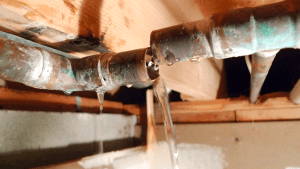Everybody has their private idea in relation to Locating water leaks.

Early discovery of leaking water lines can alleviate a possible catastrophe. Some tiny water leaks might not be noticeable.
1. Analyze the Water Meter
Every residence has a water meter. Checking it is a surefire way that aids you uncover leaks. For starters, shut off all the water resources. Make certain no one will flush, use the faucet, shower, run the washing device or dishwashing machine. From there, most likely to the meter as well as watch if it will certainly alter. Considering that nobody is utilizing it, there need to be no activities. That indicates a fast-moving leakage if it relocates. If you spot no changes, wait a hr or two and also inspect back again. This suggests you might have a slow leakage that might even be underground.
2. Check Water Usage
Examine your water bills as well as track your water intake. As the one paying it, you must observe if there are any kind of inconsistencies. If you identify sudden changes, despite your consumption being the same, it implies that you have leaks in your plumbing system. Keep in mind, your water costs need to drop under the very same array every month. A sudden spike in your bill indicates a fast-moving leakage.
A constant increase every month, even with the exact same practices, shows you have a slow-moving leak that's also slowly intensifying. Call a plumber to thoroughly inspect your residential or commercial property, specifically if you feel a cozy location on your flooring with piping below.
3. Do a Food Coloring Examination
When it comes to water consumption, 30% comes from commodes. Examination to see if they are running effectively. Drop flecks of food shade in the tank and wait 10 minutes. If the color somehow infiltrates your dish during that time without flushing, there's a leak in between the storage tank and bowl.
4. Asses Outside Lines
Do not forget to check your exterior water lines also. Ought to water permeate out of the link, you have a loosened rubber gasket. One little leak can squander loads of water as well as surge your water bill.
5. Check and also Examine the Situation
House owners must make it a practice to inspect under the sink counters and also inside cupboards for any kind of bad odor or mold and mildew growth. These 2 warnings indicate a leak so timely focus is required. Doing routine assessments, also bi-annually, can conserve you from a significant problem.
Check for discolorations and also weakening as the majority of pipes as well as home appliances have a life expectancy. If you presume dripping water lines in your plumbing system, do not wait for it to intensify.
Early detection of dripping water lines can alleviate a potential disaster. Some little water leakages might not be visible. Checking it is a guaranteed way that assists you discover leaks. One tiny leak can waste bunches of water and surge your water bill.
If you suspect leaking water lines in your plumbing system, do not wait for it to rise.
WARNING SIGNS OF WATER LEAKAGE BEHIND THE WALL
PERSISTENT MUSTY ODORS
As water slowly drips from a leaky pipe inside the wall, flooring and sheetrock stay damp and develop an odor similar to wet cardboard. It generates a musty smell that can help you find hidden leaks.
MOLD IN UNUSUAL AREAS
Mold usually grows in wet areas like kitchens, baths and laundry rooms. If you spot the stuff on walls or baseboards in other rooms of the house, it’s a good indicator of undetected water leaks.
STAINS THAT GROW
When mold thrives around a leaky pipe, it sometimes takes hold on the inside surface of the affected wall. A growing stain on otherwise clean sheetrock is often your sign of a hidden plumbing problem.
PEELING OR BUBBLING WALLPAPER / PAINT
This clue is easy to miss in rooms that don’t get much use. When you see wallpaper separating along seams or paint bubbling or flaking off the wall, blame sheetrock that stays wet because of an undetected leak.
BUCKLED CEILINGS AND STAINED FLOORS
If ceilings or floors in bathrooms, kitchens or laundry areas develop structural problems, don’t rule out constant damp inside the walls. Wet sheetrock can affect adjacent framing, flooring and ceilings.
https://www.servicemasterbyzaba.com/blog/how-to-detect-water-leakage-in-walls/

Hopefully you liked our article on Hacks to detect leaks. Thanks a lot for finding the time to read through our blog post. I beg you take a moment to promote this content if you appreciated it. Thank-you for taking the time to read it.